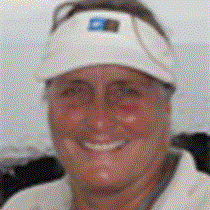Santa Cruz
This morning we awoke to find the National Geographic Islander anchored in Academy Bay where several dozen yachts, boats, and other ships were also swaying on their hooks. Some of us joined wellness specialist Maria for stretching on the sky deck and a healthy green smoothie; others slept in until hotel manager Sebastian gave us the “breakfast is ready” call at 0700. By 0800 we were boarding the Zodiacs—which we call “pangas” here in Galápagos—to motor in to the GNP docks. The Galápagos National Park headquarters are in the eastern outskirts of the bustling town of Puerto Ayora, and our visit today began there.
We walked along a cement cobble road to visit the very successful giant tortoise breeding center which is a joint project supported by the GNP and the CDRS (Charles Darwin Research Station). We enjoyed seeing and photographing the tiny hatchling tortoises that are kept in screen enclosures and protected from introduced species like cats and rats until they are old enough to fend for themselves and can be repatriated to the islands of their origin. These tiny tortoises hatch from eggs that are artificially incubated and then raised in captivity. Captive breeding allows for a greatly decreased mortality among the young tortoises and hence we can more quickly return tortoises to the wild. As a result we have been able to greatly increase the wild populations of several species of giant tortoises whose numbers were at dangerously low levels.
We walked along the shoreline main street, peering into many of the souvenir shops and colorful boutiques that lined the road. Some of us bought T-shirts, carvings, postcards, and other mementos to take home that will remind us later of these enchanted islands. We had a laugh and clicked off many photos when we reached the fish market and found that the very brazen sea lions and juvenile pelicans were begging for (and stealing) scraps from the fishermen as they cleaned their catch.
I gathered our guests at “The Rock” café and we had a cool glass of mora (blackberry) juice and a short respite before boarding buses that took us into the lush green highlands. We drove past coffee plantations—shade grown, organic coffee to be exact—and stopped in the town of Bella Vista to see how sugarcane is pressed and to taste the sweet fresh cane juice, strong cane liquor, and the delicious local coffee. Our next stop was at the entrance to a quarter-mile long lava tunnel; many of the guests climbed down into the tunnel and crossed through it.
A generous lunch buffet was waiting for us when we emerged from the tunnel and we enjoyed both the meal and the spectacular view. Boarding the buses again with our naturalists Aura, Greg, and Jason, we went on searching for giant tortoises in the wild. We were pleased to find more than a half dozen of the huge, lumbering reptiles for which these islands were named; the Spanish word “galapago” means saddle and this is what the Spaniards called the tortoises and the islands. Some of our guests say they counted as many as nine tortoises!
After taking countless tortoise photos we returned to town and either stayed to shop for a few more minutes or came back to the ship to rest, shower, and prepare for the evening. During our recapitulation at cocktail hour I talked about the unique tool-using woodpecker finch and prepared the guests for tomorrow’s hikes in search of two different species of land iguanas. Following a delicious buffet dinner we danced, laughed, and applauded the EcoArte musicians and dancers from Puerto Ayora whose enthusiastic performance drained us of the last of our energy for the day. Off we went to bed (most of us by about 2200) with smiles on our faces wondering what we can possibly see and do during the final three days of this voyage that will keep pace with what we have thus far done!




